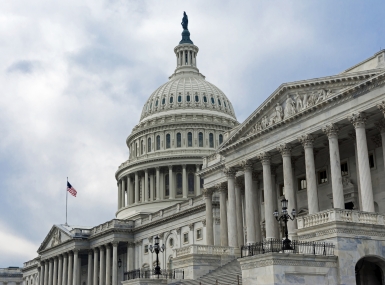NACo creates online forum for county technology
A little less than a year ago, NACo embarked on a journey to explore and develop a NACo technology blueprint. The journey started with the gathering of the NACo Board, county CIOs and IT directors and NACo staff in upper New York at Lake George and then a second focus group in Austin, Texas in October.
From those two sessions, NACo has been able to take the input and develop a new vision and mission for NACo technology:
MISSION: Promote access to secure, resilient and innovative county technologies through collaboration and cost-effective solutions.
VISION: Enable and align technology to strengthen America’s counties.
To that end, the vision includes seven pillars:
NACo Membership Engagement: Develop a strong and interactive communication platform for county IT leadership and other county leaders to connect, share ideas and problem solve together with NACo and with their respective county leadership.
Public Private Partnership Engagement: Cultivate public-private partnerships to help counties address tech needs.
Academia Engagement: Identify and develop a process for academia involvement in providing technology education that supports county needs.
State Association Engagement: Identify state associations that are strong in providing county technology programs and help grow those who are positioned or desire to provide technology services for counties within their state.
Thematic Engagement: Identify already existing associations (i.e. IT, and other business domains) and partner with them in supporting county technology needs and initiatives.
National Government Engagement: Engage with relevant national organizations that set national technology guidelines and policy or provide county technology programs and services.
Legal Engagement: Strengthen relationships with existing attorney firms and other county attorney resources that provide technology related services and expertise.
NACo is currently focused on the first pillar, Membership Engagement.
NACo is also pleased to announce that a new program called the NACo Tech Xchange is live, at 313 members and growing. It includes a robust discussion forum for CIOs and IT directors, as well as an online portal designed to connect county CIOs, IT directors, CISOs, and other IT leadership. The portal provides valuable resources in a central location which counties can use to improve their overall technology infrastructure. One may ask, “What’s in it for my county?” The new program includes:
- a rich community of interaction with other county IT professionals, including weekly updates from the NACo CTO, as well as daily communications among the members on critical technology topics
- an online library of technology policies, job descriptions, request for proposals, best practices as well as toolkits
- monthly IT newsletters
- technology webinars presented by speakers from the federal, state, local and corporate communities
- valuable external resources that county IT staff can leverage to improve their county IT infrastructure
- and surveys garnering county feedback on technology opportunities such as technology software and services aggregate agreements.
As we move forward in 2020, we will be focusing the Tech Xchange efforts on four key priorities:
- further developing the online Tech Xchange Portal
- providing cyber security services and programs
- developing IT leadership talent acquisition and retention
- and providing data governance education and resources.
Attachments
Related News

Congressional leaders introduce new legislation for a national data privacy framework
On April 7, U.S. House Energy and Commerce Committee Chair Cathy McMorris Rodgers (R-Wash.) and U.S. Senate Commerce, Science and Transportation Committee Chair Maria Cantwell (D-Wash.) introduced the American Privacy Rights Act.

DOJ issues final rule for state and local governments to implement web-based accessibility standards
On April 8, the U.S. Department of Justice (DOJ) announced the release of a web accessibility final rule for state and local governments.

